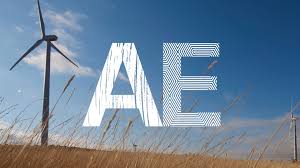| Alternative energy simply put is energy generated in ways that do not deplete natural resources or harm the environment, especially by avoiding the use of fossil fuels and nuclear power. Humanity has destroyed a majority of the planet’s natural resources. By using alternative energy, perhaps some of the damage could be reversed or delayed.There are many trends that follow alternative energy methods. In 2019, expect to see innovative ways to create new energy storage. For example, batteries are commonly being used in both residential and grid-wide scales. Storing energy is a way to tackle the supply and demand for renewable energy systems.
Research is developing in AI, as microgrids are being used as local energy grids that will connect to a larger traditional grid. These AI grids allow for continuous adaptation. “From California to the Pacific Islands, microgrids are taking center-stage. Palau is a Pacific island nation and the 13th smallest country in the world but has committed to building what would be the world’s largest microgrid – 35MW of solar panels paired with 45 megawatt-hours of energy storage.” (Forbes) Alternative energy is affecting the housing industry as well. Cutting home energy consumption is one major key to reducing greenhouse gas emissions. The U.S. Homes accounted for a full 16 percent of U.S. natural gas use in 2017, coming in third behind power generation and industrial users. Commercial users were fourth at 12 percent, and the transportation sector barely registered. With housing being a leading cause of greenhouse gas emissions, expect more cities in 2019 to establish renewable energy goals, such as finding new ways to leverage the collective power of ratepayers to get their hands on more clean power. One emerging pathway is community choice aggregation. These programs force utilities to provide a voluntary clean power option. In the past, community choice wasn’t working because wind and solar were more expensive. Now, as costs are continuing to drop, community choice is growing in popularity. Community choice is already happening in California and New York. Illinois, Massachusetts, New Jersey, Ohio, Rhode Island and Virginia have also passed enabling legislation. Slowly, residential communities are taking steps in the right direction to protect the planet. |



